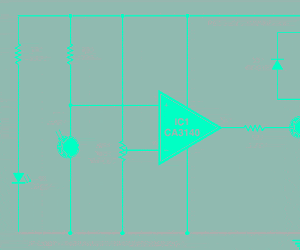Researchers from Switzerland developed a very precise reference frequency signal which allows the direct comparison of frequency measurements in the lab with an atomic clock.
Many scientific experiments and wireless communication equipment need a precise time reference. The precise reference allows the scientists and researchers to calibrate the time measurements made by their equipment. Some of those experiments are spectroscopy investigations—in which chemical reactions between molecules are examined in real time—and physical studies on natural constants.
Researchers from the ETH Zurich, the University of Basel, the Swiss Federal Institute of Metrology (METAS) – Switzerland’s “guardian of measurement units”—and the SWITCH Foundation have demonstrated that such a precision reference signal can be sent via conventional telecommunications infrastructure.
“Initial results show that this permits chemical spectroscopy analyses that are 100 times more accurate than before,” reports Stefan Willitsch, Professor of Physical Chemistry at the University of Basel and coordinator of the project. “With this precision, the laws of nature are verified by spectroscopic measurements on molecules with unprecedented accuracy,” says Frédéric Merkt, Professor of Physical Chemistry at ETH Zurich.
As part of this project, researchers established a trial network that connects the METAS site in Wabern near Bern with the University of Basel and ETH Zurich. A clever process synchronizes the output signal with the METAS atomic clock. This signal is transmitted via the fiber-optic network operated by SWITCH—which manages IT network infrastructures for Swiss universities—to Basel and Zurich, where researchers can use it to calibrate their measuring devices.
“To ensure that the signal reaches the researchers with the desired level of precision, transmission must be continuously adjusted. Even the slightest variation in the length of the fiber-optic cable—caused by vibrations or temperature changes—affects the frequency,” explains Jacques Morel, Head of the Photonics, Time and Frequency Laboratory at METAS.
According to the researchers, the next step will be to further expand the network to include other Swiss institutions such as CERN in Geneva, EPFL or the University of Neuchâtel.






